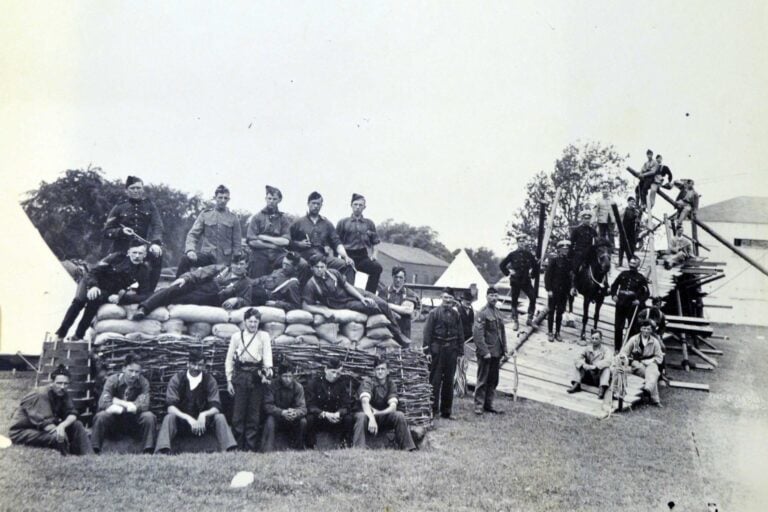Sometimes I think it’s easy for us to forget that, not so long ago, Niagara-on-the-Lake was a quiet little town surrounded by farms and orchards. Vineyards were a rarity and grapes were associated with jam, not wine.
I was reminded of this fact recently when a life-long resident of the town stopped by our Centre Street project to have a chat and check on our progress. He had been a childhood acquaintance of Trudy Roberts, whose parents owned the house in the 1950s, and he recalled those days fondly. During our conversation, he mentioned Centre Street was then still a gravel road and, just across Mississagua Street, he remembered an old barn that had survived until well into the 1960s.
“The town was a pretty sleepy place,” he said. “Before the Shaw and the wineries, we were just a bit of a backwater. Oh, we had some Yankees that would come up during the summer, but most of the time you’d only see faces that you knew. It was a good place to grow up in.”
His comments turned my mind back to my first visit to Niagara-on-the-Lake in the early 1970s.
After retirement, my aunt and uncle had purchased an American Foursquare on Mary Street as their “forever” home and proceeded to restore and renovate it in a fashion that would encompass my aunt’s diminishing eyesight. While my uncle made significant contributions to both the Friends of Fort George and the Niagara-on-the-Lake Museum, my aunt (a gourmet chef) devoted her time supporting St. Mark’s Church and creating gastronomic experiences twinned to the early Niagara wines.
I so clearly recall that first visit to Niagara-on-the-Lake.
It was like visiting a microcosm caught in time. All that Ontario had lost, in the drive to modernize the urban landscapes, had survived in this town. While there were a couple of small gaps from an architectural style perspective (Richardson Romanesque and Italianate), among Old Town, St. Davids, Queenston, Virgil and the lands between, Niagara-on-the-Lake represented a virtual treasure-trove of Canadian architectural history.
Fifty years later, we live in a threatened heritage landscape. Developers populate the town with bland, non-descript homes, significant architectural statements are compromised by questionable additions, Smart Centre-inspired commercial builds are popping up along Niagara Stone Road and historic farmhouses (and barns) are abandoned to lapse into disrepair.
I say again, it is passed time for clear, unequivocal architectural and heritage guidelines for the entire Town of Niagara-on-the-Lake.



.jpg)







